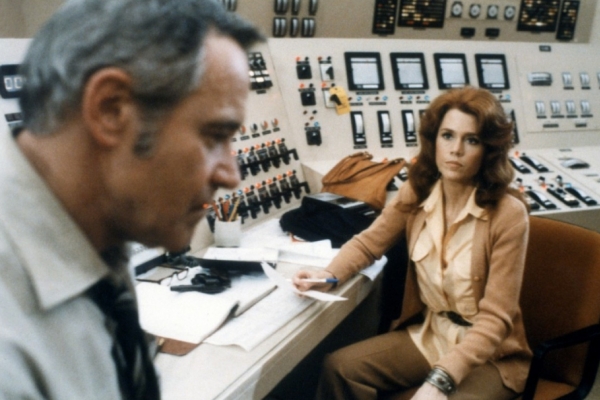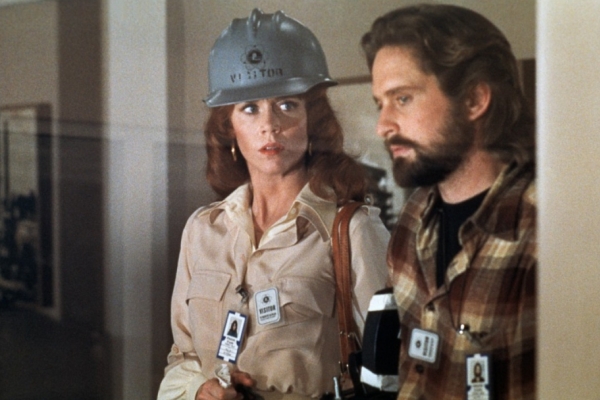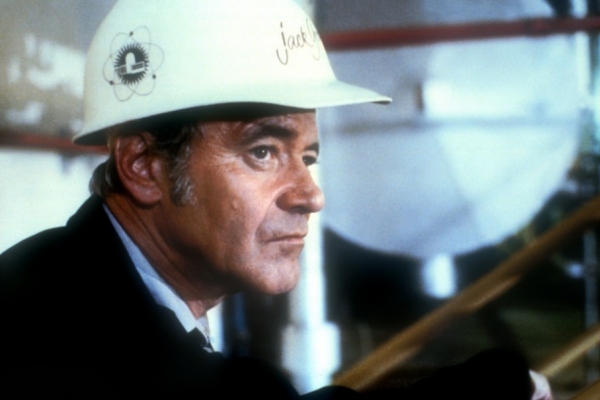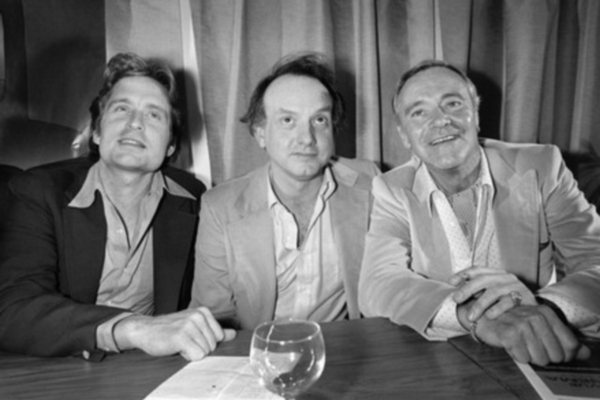Accidents Happen
The following piece is an adapted excerpt from The Films of James Bridges, by Peter Tonguette, published here with permission of McFarland & Company, Inc.
"The gifted young director James Bridges" was how Tennessee Williams described him.
Bridges was selected by Williams personally to direct the 25th anniversary production of A Streetcar Named Desire at the Ahmanson Theatre in Los Angeles in 1973. Jon Voight was Stanley. Faye Dunaway was Blanche. Many of the reviews were lukewarm. Even so, it is difficult to talk down the good fortune of having been chosen by the greatest American playwright to direct an anniversary production of one of his greatest plays. Bridges surely must have viewed it as one of the highlights of his career. But his was a career of highlights. Interviewed by the Los Angeles Times several years later, upon the release of his third film as a writer-director, September 30, 1955, Bridges recalled, "I've been a very lucky boy. I've done exactly what I wanted to do."
Just how lucky was he? His first play, The Days of the Dancing, was staged at the Beverly Hills Playhouse in 1961, when Bridges was all of 25 years old. The young scribe received considerably better reviews than he later would for A Streetcar Named Desire. It also caught the attention of a prominent member of the audience: actor-producer-director Norman Lloyd, who later wrote in his memoir that the play "was not successful" but that "the writing revealed a considerable talent." Bridges remembered: "He was very enthusiastic about my writing and some months later when I was stage managing a play for John Houseman at the UCLA Theatre Group, I got a call from Norman, who asked me if I would be interested in writing an episode of The Alfred Hitchcock Hour which he was producing. I was and I did." Fifteen more episodes (and an Emmy nomination) were to follow. "He was our best writer," Lloyd told me.
Hitchcock's "best writer" had also been a bit part actor, appearing in both the final film of Ethel Barrymore (Johnny Trouble) and one of the first films of Andy Warhol (Tarzan and Jane Regained ... Sort Of). He was a protégé of Montgomery Clift, John Houseman, Norman Lloyd, Salka Viertel, and others. He was a friend to John Cassavetes, Christopher Isherwood, Virgil Thomson, and many others. He was a mentor to Jack Bender, Aaron Latham, Lisa Blount, Debra Winger, and countless others. He was, every bit as much as Orson Welles, a renaissance man.
I have been struck again and again by the charmed nature of Bridges's career. Examples abound. When he directed his first film, The Baby Maker, less than a decade after The Days of the Dancing had its premiere, Robert Wise—the editor of Citizen Kane, later the Academy Award-winning director of West Side Story and The Sound of Music—produced it. This was far from an everyday occurrence. "In addition to the films that he both produced and directed," Sergio Leemann noted in his book on the filmmaker, "Wise produced two films by first-time directors." Only two! And one of those two was by Bridges. No less remarkable is his 15-year collaboration with the legendary cinematographer Gordon Willis, who first worked with Bridges on The Paper Chase and went on to photograph three more films for him. In the end, Willis photographed a higher percentage of films by Bridges than he did films by any other director; four out of Bridges's eight features were shot by Willis.
In this light, Tennessee Williams's description of him, generous though it is, hardly does Bridges justice. And his accomplishments can't be accounted for by mere "luck" either, as Bridges himself would have it. Norman Lloyd called him "charming, laidback," yet also noted that "he was strong. In this charm and laidback thing, you couldn't push him over. He was very strong in that regard. On Urban Cowboy, I know they didn't want Debra Winger. He wanted her. His strength on that proved beneficial to the picture." Winger recalled: "Jim was a very unsuspecting hard-ass. He could get in there and fight with the best of them. Although I fear he suffered later, because he really was not that kind of a person."
What kind of a person was James Bridges? In the course of writing my book on his life and work, I interviewed 32 of his colleagues and friends, among them Gordon Willis, who said that collaborating with him was "the better part of my working experience. A lovely man who somehow remained on the edge of the Hollywood experience....He was a nice person." Impressive as Bridges's professional accomplishments are, they pale next to his qualities as a person, according to the accounts given to me by those who knew him best. Bridges was, quite plainly, beloved. "Once you met him," said Kim Kurumada, who worked on five of his films, including as the executive producer of Mike's Murder and Perfect, "you never forgot him."
How to top a masterpiece? This is what Bridges confronted after making September 30, 1955, and the most perceptive observers of his work knew it. Reviewing his next film, The China Syndrome, Chicago Reader critic Dave Kehr wrote that it "looks like a hack job, particularly after the personal anguish of 9/30/55, but it's a very good hack job: strong, simple, and perfectly paced, until the last reel flounders in a bit of overkill."

Jack Lemmon and Jane Fonda in The China Syndrome
Bridges could do better than "a very good hack job," but it would be difficult for any director to sustain the heights of a film like September 30, 1955. Even John Ford couldn't do it. According to Peter Bogdanovich (writing in appreciation of Ford's Mogambo), the director "always used to say that he tried to alternate his pictures by doing ‘one for them' and then ‘one for myself,' meaning he would accept an assignment to satisfy the studios and the box office, and this would often enable him to get the backing for his more risky, personal projects." Bridges did exactly this. "When Jim would have a hit, he would want to make a personal film," his partner, Jack Larson, explained. "When he was the goose that laid the golden egg with a hugely successful film like The China Syndrome or Urban Cowboy or The Paper Chase, he would then want to do a personal film and they were basically about what he knew and were romans à clef."
At first, Bridges didn't want to direct The China Syndrome. The film was a union of two separate projects about nuclear power that were being developed by Michael Douglas and Jane Fonda, who became the film's eventual stars and co-producers. In a documentary about the film, Douglas explained, "An unsolicited script came through the transom called The China Syndrome. It was written by a gentleman named Mike Gray....And I read The China Syndrome and thought, ‘Wow, this is a really good monster movie,' and by that I meant it was a real thriller. There was this machine, this nuclear power plant, that was out of control that had a sort of monster-type feeling to it." Meanwhile, Fonda and her producing partner, Bruce Gilbert, "were inspired by what happened to Karen Silkwood" and were "developing our own movie about nuclear power. We were particularly interested in me playing a television reporter."

Jane Fonda and Michael Douglas in The China Syndrome
Coincidentally, both projects were at Columbia Pictures, Fonda explained, "so this very smart woman at Columbia, the vice president in charge of production, Roz Heller, said, ‘Hmm. We're only going to do one nuclear film. Maybe the two of you could kind of like pool resources.'" Bridges was recruited to "pool" the screenplays. Gilbert said: "It was a testimony to a real kind of brilliant idea about structure that Jim Bridges...brought to a melding of these two stories to create the movie that we call The China Syndrome." Bridges, who had worked so well with unknown actors on his previous two films, was reticent about making a film with stars of the caliber of Fonda and Douglas. He discovered, however, that "Jane and Jack [Lemmon] and Michael were as easy to work with as if they were anonymous." But there was another reason for Bridges's hesitation in agreeing to direct The China Syndrome. According to Larson, he thought that the film's subject matter—the dangers of nuclear power—"was a huge responsibility. He would get up every morning and pray that he didn't betray this responsibility on this film and what the film had to say. He wanted to be objective and fair.... Jim felt that it was a big responsibility on his shoulders that sent him back to his Assemblies of God prayerfulness. He would pray every day."
The China Syndrome was released on March 16, 1979; on March 28, the Three Mile Island nuclear power plant accident occurred. But even before this infamous coincidence, opposition to nuclear power had been growing across the country. Bridges, described by Larson as "a Democrat from Arkansas" who enthusiastically attended the peace marches his friend "dragged" him to during the Vietnam War, undoubtedly was aware of the breadth and gravity of the anti-nuclear movement, and wanted to do right by it.
He took the assignment.
The final screenplay of The China Syndrome was credited to Mike Gray, T.S. Cook, and Bridges. In it, Jane Fonda played Kimberly Wells, a Los Angeles television news reporter. Michael Douglas played freelance cameraman Richard Adams, who draws the assignment of filming Wells's story about the nearby Ventana nuclear power plant. Jack Lemmon played Jack Godell, the plant supervisor. A potentially catastrophic accident occurs, which is witnessed by Kimberly and Richard.

Jack Lemmon in The China Syndrome
For the first time since The Baby Maker, Bridges didn't have Gordon Willis with him behind the camera. Filling in was the talented and versatile James Crabe, who shot many films for director John G. Avildsen, including Rocky.
But Crabe only worked with Bridges on this one occasion, and the results are mixed. In a generally scathing Film Comment review, Richard T. Jameson lamented Willis's absence from the picture. If Willis had shot The China Syndrome, Jameson wrote, it "would have had a better chance at developing the cinematic resonances the subject deserved....Crabe got the job, and the result is a TV movie on the theater screens." Jameson conceded the presence of only "a single interesting image: the concentric rings on the surface of Jack Godell's coffee registering the otherwise undetected secondary vibration from the turbine trip, bespeaking subtler, more dangerous disturbances in the works."
Jameson selected an eye-catching image, but it isn't the only one. What about the graceful way in which Bridges and Crabe take us in and out of the visitors' gallery above the control room as Kimberly, Richard, Richard's assistant Hector (Daniel Valdez), and plant public relations representative Bill Gibson (James Hampton) witness the accident unfolding before their eyes? In one shot, the camera starts on the outside of the gallery's window and cranes down to reveal the inside of the control room below, signaling a change in perspective; up until this point, we have only been privy to what Kimberly and Richard have seen as they have toured the plant with Gibson. Now we are taken into Jack Godell's world.
A bit later in the same scene, Bridges indicates without any dialogue that Richard has begun to film the scrambling plant workers he sees through the window. In a profile close-up, Richard is in the foreground of the shot, with Kimberly beside him, and Gibson and Hector in the far background past her. Forbidden by Gibson to photograph this part of the plant, Richard covertly begins to do just that after it becomes clear that something frightening is taking place. Kimberly mouths to Richard, "Are you filming?" He discreetly nods his head. We pan down from the close-up of Richard to the camera in his arms.
Thought and planning have gone into shots such as these. At the same time, it is impossible to deny that The China Syndrome is an ugly film. It is ugly in a way that no Bridges film was before or after. After all, what is appealing about a nuclear power plant? Consider the fact that Bridges's directorial credit appears over a wide shot of the Ventana plant as Richard, Kimberly, and Hector drive up to it on a dirt road. Obscured by a thick haze, the plant mars the landscape, blotting out most of the mountain range that stands behind it. There is no way to prettify such a scene, and Bridges and Crabe evidently chose not to even try.
The production was designed by George Jenkins, who had previously worked on The Paper Chase. Jenkins's set is masterful, but it is also monstrous. (Lest we forget, Douglas originally thought of The China Syndrome as a "monster movie.") Watching the film, it's hard not to think of the question Major Amberson plaintively poses to Eugene Morgan about the rise of the automobile in The Magnificent Ambersons: "Do you really think they're going to change the face of the land?" The Ventana plant doesn't just change the land—it defaces the land. It is appropriate that Bridges and Crabe eschewed too much visual elegance in photographing it.
Bridges's filmography is full of rhymes. Two of his films (The Paper Chase and September 30, 1955) take place on college campuses during the fall. Two (The China Syndrome and Perfect) have journalists as leading characters. Two (September 30, 1955 and Urban Cowboy) are set in the South. Though it was the most impersonal film of his career, The China Syndrome nonetheless reflects aspects of Bridges's other films, usually in surprising ways. One of the most striking is Douglas's portrayal of Richard Adams, who spends most of the film in a state of agitation and outrage at the perceived "cover-up" that stems from the refusal of Kimberly's station to air the footage he shot at the plant.
Kim Kurumada, who was the film's first assistant director, observed, "Michael's character was in some ways one of the more difficult because he was the kind of young radical. I wondered sometimes, and Jimmy and I used to talk about it, 'God, every time Michael Douglas is talking, he's yelling. Aren't they going to get tired of him yelling all of the time?' But I think that Jimmy felt, no, that's kind of the point. When people are like that, you do get tired of them. His point kind of was, political activists who are yelling all of the time, even though they're telling the truth and they have a message worth listening to, you get tired of hearing them yelling. Sometimes we are our own worst enemies in that we destroy the listener we're trying to reach the most. Those kinds of thoughts....That was a lot of Jim Bridges."
The way that Kimberly relates to Richard (and his melodramatic outbursts) is remarkably similar to the way Jimmy J.'s mother relates to her son (and his melodramatic outbursts) in September 30, 1955. After Richard makes a scene at a meeting with station management, Kimberly confronts him outside in the hallway. Though Richard is ultimately vindicated, and Kimberly won over to his perspective, she, like Jimmy J.'s mother, sounds like the voice of reason as she tries to persuade him that his petulant behavior is not helping anything and that she is "not ashamed that I've got a good job, and I have every intention of keeping it, and getting a better one!" Even the staging and framing of this exchange recalls a shot that occurs in the scene with Jimmy J.'s mother in September 30, 1955: a medium two-shot with Jimmy J./Richard to the left and Jimmy J.'s mother/Kimberly to the right.
Similarly, aspects of Jack Godell are not unlike Professor Kingsfield in The Paper Chase. Certainly Richard's incessant yelling compares unfavorably with the cool, composed demeanor that Godell shares with Kingsfield. A navy veteran who admits to "loving" the Ventana plant, Godell comes to have reservations about its safety, but those reservations are based on his knowledge and experience. He is not basing his doubts on a roll of film depicting events he doesn't fully understand, as Richard is.
Godell also uncovers the facts surrounding Ventana's safety more doggedly than Kimberly, who, prior to the Ventana accident, does not seem inordinately unhappy about doing stories on such things as singing telegrams. And when Godell discovers that the plant's welding X-rays are really a single X-ray duplicated again and again (one of the film's most visually thrilling scenes), he hasn't just happened upon his discovery, as Richard and Kimberly have; he was looking, carefully, for signs of something amiss. Though Godell finally has a kind of nervous breakdown, taking over the control room by force in order to expose the plant's dangers, this only occurs after threats are made against his life by shadowy forces connected with the plant.
Richard T. Jameson's pan notwithstanding, The China Syndrome was received enthusiastically by the critics. Roger Ebert called the film a "terrific thriller," praising Bridges's "exquisite sense of timing and character development to bring us to the cliffhanger conclusion." In The New York Times, Vincent Canby proclaimed the film "smashingly effective" and "very stylish." Canby suddenly sounded like a James Bridges aficionado, calling him "a gifted and witty melodramaticist....He has an ear for the way people talk, an eye for the pressed-plastic look of our transistorized world and sympathy for minor dishonesties that can suddenly shape the way people behave when faced with major problems." Twenty years after its release, it was the only Bridges film selected for inclusion in The New York Times Guide to the Best 1,000 Movies Ever Made.

Michael Douglas, James Bridges and Jack Lemmon
Such accolades ring a little hollow when given to a film, however estimable, that fundamentally lacks the richness and depth of its predecessor. Just before he began making The China Syndrome, Bridges affirmed the unique place September 30, 1955 held in his career: "I think it's probably the best movie I'll ever make."
Very little got by James Bridges. ![]()
LATEST ARTICLES
-20140814-173707-thumb3.jpg)
Fighting Words
by Imogen Sara Smith
posted August 12, 2014

Fighting Words, Part 2
by Imogen Sara Smith
posted August 20, 2014

On the Margins: The Fil…
by Andrew Chan
posted August 12, 2014

Robin Williams: A Sense…
by David Schwartz
posted August 12, 2014
 Accidents Happen
Accidents Happen
KEYWORDS
James Bridges | The China Syndrome | Hollywood | Jane Fonda | Michael Douglas | Jack Lemmon | Gordon Willis | film review | Making-ofTHE AUTHOR
Peter Tonguette is the author of The Films of James Bridges and Orson Welles Remembered. He is presently writing a critical study of Peter Bogdanovich for the University Press of Kentucky and editing a collection of interviews with Bogdanovich for the University Press of Mississippi.
More articles by Peter Tonguette
